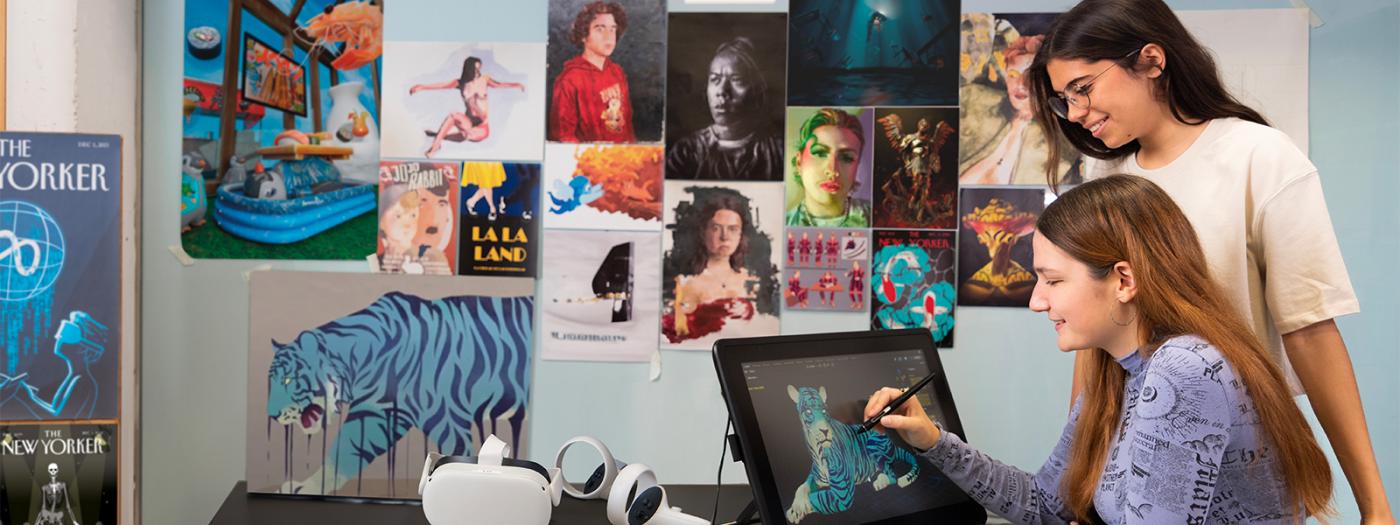Design and develop an inorganic and organic visual environment, fundamentals of environment design.
This course provides a fundamental foundation for the creation and conceptualization process of a complete visual
environment. A way to express and develop an idea of a 360-degree environment.
Learn to understand space, fill it appropriately, and create a universe where characters and objects can be added.
Different styles and 2D techniques will be explored.
Titular Professors
Learning Outcomes of this subject are:
RA.145 The student will be able to create non-natural environments through 2D digital techniques.
Exercise 1: Creation of environment thumbnails. Line and block technique. Learn how to create these thumbnails and
use this technique.
Exercise 2: Initial sketch of the key elements of the environment. Study of the initial planning of an environment,
identifying key elements to create and how to develop them.
Exercise 3: Selection and completion of the final environment sketches. Staging of all the created key elements,
composition, and narrative of the visual environment.
Exercise 4: Visual planning prior to 3D development. Identification of which parts will be modeled and which parts will
be drawn over, learning to plan these types of environments and economize time.
Exercise 5: Painting using different 2D techniques. Preparation of key images and digital painting, including techniques
such as photobashing, lighting, and organization of depth layers.
Exercise 6: Final finishing and presentation of images. Use of advanced techniques to add visual effects and enhance key
images.
The student will create a continuous project during visual environment classes, applying all the theories taught in this
project. In each class, the theory of a fundamental field for environment design will be introduced, and in the same class,
it will be applied in the exercise on the same project. With cumulative learning on the same project, students will be
able to assimilate and understand the fundamental theoretical and practical concepts of how to design an environment.
Project: Development of a 2D Environment
Phase 1:Design, research, sketch creation, visual development in sketch format of individual elements of the
environment.
Phase 2: Creation of the basic environment, final sketches.
Phase 3: Digital painting and final finishing..
Given that it is a predominantly practical subject, the evaluation will be based on the timely submission of the works corresponding
to the outlined phases.
Phase 1: 30% Phase 2: 30% Phase 3: 40%
Extraordinary evaluation:
Only in cases of exceptionality (accident, illness...), a student who does not pass the ordinary evaluation has the option to pass the
subject in the extraordinary evaluation period.
Evaluation criteria for all sessions:
If the conditions for passing the evaluation are not met, the maximum grade will be a 4.
The student is entitled to a review of the grade on the day stipulated by the professor. During the review, the student's grade may
be increased or decreased.
Use of AI tools: If AI tools are used in any activity, a paragraph should be indicated stating what AI was used for and
what indications were used to obtain the results. Failure to do so is a violation of academic honesty policies.
